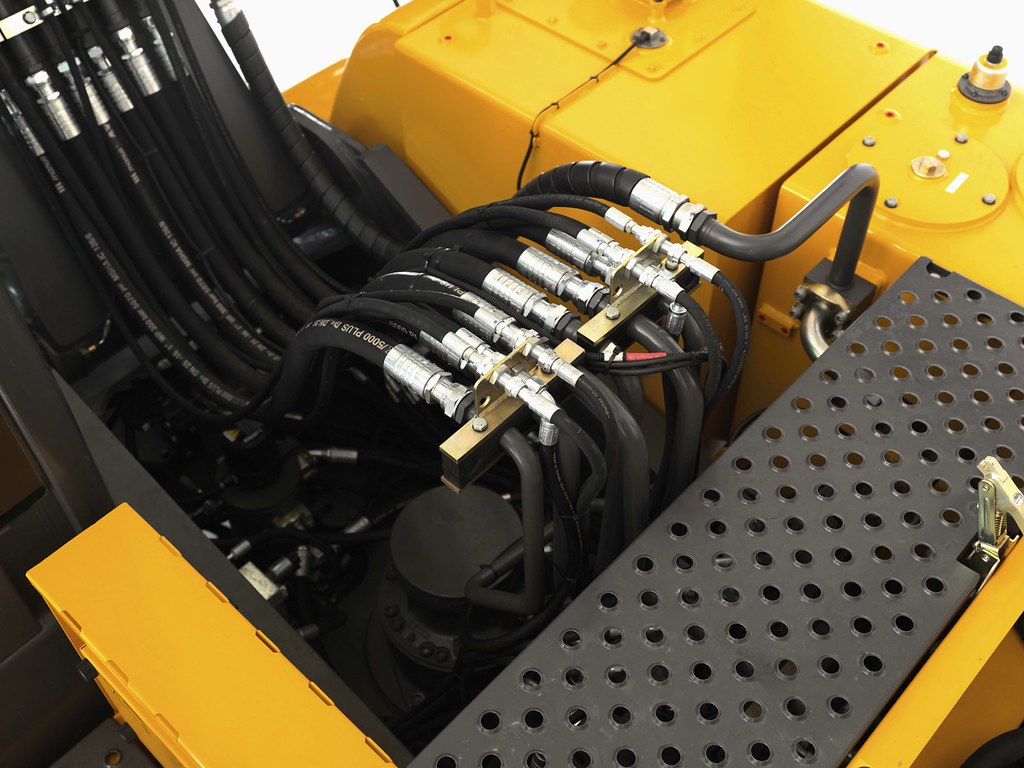Hydraulic hoses are high-performance products and therefore require careful handling to extend their lifespan and ensure any issues are detected early. Since they have to withstand high pressure and form part of an often complicated system, there are various sources of danger when dealing with them, and which must be handled with particular care.

Checking For Damaged Seals
Damaged seals are a significant source of hydraulic accidents. Since most hydraulic hoses operate under high pressure, damaged seals can have a detrimental effect on the hydraulic system and to workers near the damaged areas. The hydraulic fluid can leak and cause damage and is particularly dangerous when it comes into the eyes. Emergency kits should always be available to patch up leaks before a longer term repair can be enacted.
Care should be taken to ensure that the manufacturer’s guidelines are followed to avoid putting excess strain on the hydraulic seals. Regular inspection can also detect damage at an early stage, so that seals can be replaced before they fail.
Regular Servicing To Reduce The Risk Of External Or Internal Damage
Damage can be caused by improper installation or excessive bending of the hoses. Bends and kinks in the hose, which under normal circumstances would be entirely harmless for the material of the hose, can cause severe damage when under load.
Hydraulic hoses should be checked visually for any signs of wear and tear on a regular basis. Such damage can occur on the outside where it is quickly noticed, but it can also occur on the inside of the hose where it is difficult to detect. To avoid such damage, regular internal inspections are recommended as part of your servicing routine, with damaged hoses replaced or repaired immediately. The system should also not be exposed to high or low temperatures or frequently changing operating conditions. Subsequently changed operating conditions can lead to serious impairments of the system if care is not taken to ensure the hoses are in a good state of repair.
Checking The Pressure and Temperature
Too high a pressure can lead to the hose making slagging and lashing movements, but it can also cause hydraulic fluid to splash. Temperature level tolerances vary for each hose, and it is essential that the temperature does not rise above the maximum level.
Watch Out For Leaks
If hydraulic hoses leak, patch kits should always be available to enable the workers concerned to make on-the-spot repairs. A leak should never be allowed to persist as the damage will only get worse. In addition, measures should be taken immediately to remove the spilled hydraulic fluid. Not only is there a risk of fire, but workers could also slip on it and suffer serious injuries – not to mention the caustic nature of many hydraulic fluids.
A Sustainable Approach
Ultimately, a hydraulic hose is a sealed unit, and so repair will only normally be a short-term fix. The most sustainable approach to hydraulic hose maintenance is to establish good usage practices that minimise strain and extend the life and performance of your hoses as much as possible. Obviously damaged hoses should be very carefully monitored and replaced as soon as possible, as a leaking or worn hose is a safety hazard as well as an inconvenience. For more information about hydraulic system safety and maintenance good practices, please get in touch today.


